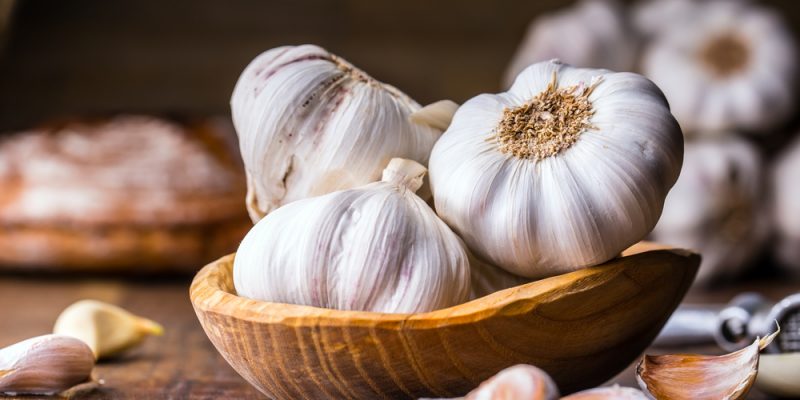The Health Benefits of Garlic
There aren’t many savoury dishes that can’t be made more delicious with the addition of garlic.
It has been used for centuries as a seasoning and flavouring, but also as a traditional medicine.
Garlic is a close relative of onion, shallot, leek and chive, with the bulbous root a part of the onion genus, Allium. It’s is cultivated for its root which is called a head or bulb, and a single segment of the bulb is called a clove.
Origins
Common garlic can be traced back to wild garlic that grew in central and southwestern Asia.
It’s use can be dated back to the beginning of recorded history. It was found in Egyptian pyramids and ancient Greek temples, circa around 3200 BC. Ancient medical texts from Egypt, Greece, Rome, China and India each prescribed medical applications for garlic.
Wild garlic also grows in parts of Britain, as it had become naturalised to the region, much like many places all over the world.
Present conditions
Until recently very little garlic was produced commercially in Australia. It’s only really produced when traditional northern hemisphere growing areas are not in production.
We import around 10,000 tonnes per year, the majority of which comes from China, but there is an increasing amount now coming from Spain, Argentina, Mexico and the USA.
Health Benefits
- Garlic has been used for medicinal purposes for centuries, but studies have shown that it has proven benefits for preventing and reducing the length of the common cold.
- The active compounds in garlic have been found to reduce blood pressure. Studies show garlic supplementation has a significant impact on on people with already high blood pressure, but you need a large dose for it to be effective: the equivalent of 4 garlic cloves per day.
- Garlic contains antioxidants that support the body’s protective mechanisms against oxidative damage, which may help to prevent Alzheimer’s Disease and dementia.
- It was traditionally used in ancient cultures to reduce fatigue and enhance the work capacity of labourers, and has been found recently to reduce exercise-induced fatigue.
- At high doses, the sulfur compounds in garlic have been shown to protect against organ damage from heavy metal toxicity.
Getting the most out of Garlic
Selection – Try to buy loose garlic bulbs rather than bagged, as you can clearly see the quality of the bulb. The bulbs should be plump and compact, with taut, unbroken skin and firm to touch. If the bulbs feel light, soft or even hollow, then it isn’t fresh.
Storing – Store bulbs in a mesh or wire basket, or even a paper bag to allow ventilation. Keep out of direct sunlight on the kitchen bench or in the pantry. They will last a couple of weeks.
Don’t store in the fridge or in plastic bags or sealed containers; it can cause fresh garlic to go mouldy or sprout.
Preparing – You’ll need to peel the skin off garlic cloves before chopping or grating. Unless you choose to roast the garlic; keep the skin on so that the clove stays intact while roasting.
Raw garlic can be difficult to digest in large amounts, so it’s recommended to cook before eating. Cooking garlic can diminish the health benefits, but it doesn’t remove them completely.
Cooking – You can cook garlic in many different ways, you can use dried garlic for seasoning, in dressings, salsas, butters, and dips, or cook garlic in sauces, soups, stews, curries, stirfrys, or roast with vegetables or meats. The possibilities are endless.
If you are frying, just be careful not to overcook or burn the garlic, this can make it taste very bitter and unpalatable.
